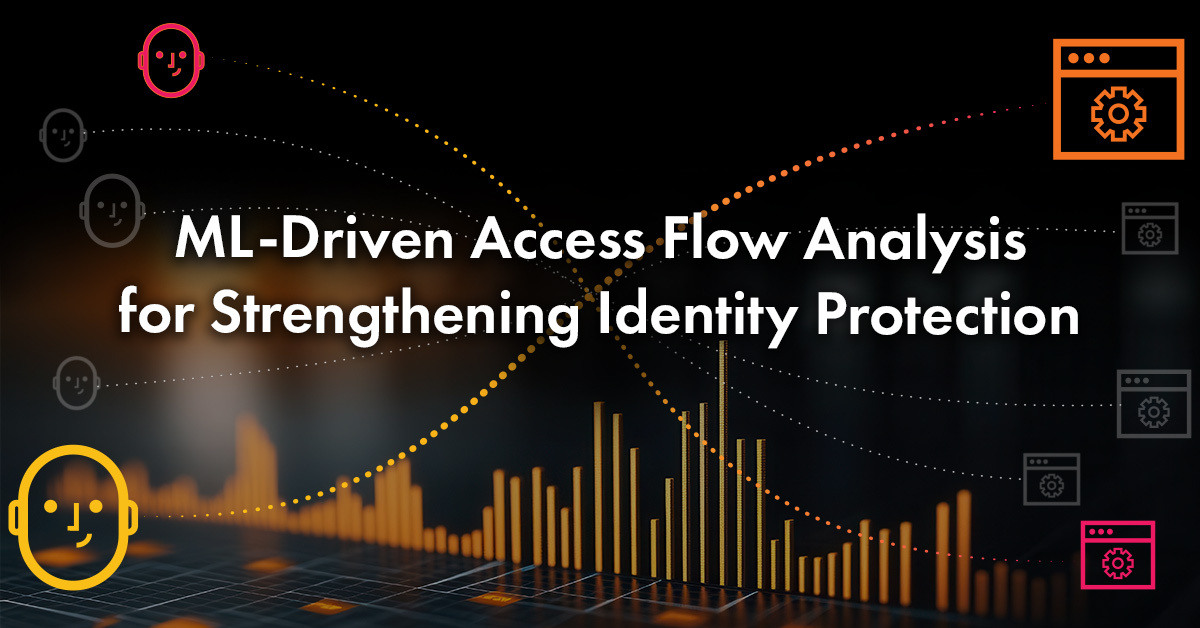- Nov 14
Using ML-Driven Access Flow Analysis for Strengthening Identity Protection
Updated: Nov 14

Increased awareness around Active Directory (AD) vulnerabilities has put Microsoft AD enterprise security in the spotlight, especially following a recent report by the Five Eyes intelligence-sharing alliance:
In response to a surge in high-profile cyber attacks, including ransomware and state-sponsored campaigns, the alliance—comprising intelligence agencies from the United States, United Kingdom, Canada, Australia, and New Zealand—released a comprehensive guide to help organizations better secure their AD environments. The report outlines 17 common techniques attackers use to compromise AD, providing detailed recommendations for strengthening AD defenses, preventing intrusions, and countering cybercriminal tactics. By highlighting AD’s critical role in controlling access and permissions across networks, the guide underscores the urgency of protecting AD, and the entire identity fabric, against increasingly sophisticated threats, and urges organizations to adopt proactive strategies to prevent future compromises.
Why Active Directory?
As the backbone of enterprise networks, Active Directory controls user access, authentication, and permissions across organizations. The guide states that Microsoft’s Active Directory is the most widely used solution in enterprises. Its pivotal role in authentication and authorization makes it a valuable target for malicious actors and it’s routinely targeted as part of malicious activity on enterprise IT networks. A compromised AD system can lead to catastrophic consequences, allowing attackers to move laterally across networks, access sensitive data, and cause severe disruptions to business operations.
The guide highlights that “gaining control of Active Directory gives malicious actors privileged access to all systems and users that Active Directory manages. With this privileged access, malicious actors can bypass other controls and access systems, including email and file servers, and critical business applications at will. This privileged access can often be extended to cloud-based systems and services”.
The Complexity of Detecting Active Directory Compromises
Detecting AD compromise can be difficult, time-consuming and resource-intensive, since they exploit legitimate functionality and generate the same events generated by normal activity. This complexity poses difficulties even for organizations with advanced Security Information and Event Management (SIEM) and Security Operations Center (SOC) capabilities. Distinguishing malicious activity from regular activity often requires correlating different events, sometimes from different sources, and analyzing these events for discrepancies. The guide explains that “the complexity of detecting Active Directory compromises is one of the leading causes of their success and their prevalence against organizations.”
This complexity also means malicious actors can exploit Active Directory to establish long-term access within organizations. Certain persistence techniques allow attackers to maintain remote access, even bypassing multi-factor authentication (MFA) controls. Many of these methods are resilient to standard cybersecurity incident detection and response efforts. In some cases, advanced threats can linger undetected within Active Directory for months or even years.
Securing Privileged Access Is a Top Priority
Control over Active Directory provides malicious actors with privileged access to all systems and identities it manages. Consequently, they aim to escalate privileges and gain domain control by targeting highly privileged users, such as those in the Domain Admins and Enterprise Admins groups. Access can also be obtained by targeting other identities, like service accounts. Therefore, preventing the compromise of privileged users and identities and securing privileged access is essential for mitigating Active Directory compromises and the guidance says it should be a top priority for all organizations.
Compromise Detection Isn’t Enough
The guide continues to discuss the most common AD compromise techniques and suggests ways to detect them. These compromises include Kerberoasting, AS-REP roasting, password spraying, MachineAccountQuota compromise, unconstrained delegation exploitation, GPP passwords compromise, certificate services compromise, Golden Certificate, DCSync, dumping ntds.dit, Golden Ticket, Silver Ticket, Golden SAML, Microsoft Entra Connect compromise, one-way domain trust bypass, SID history compromise, and Skeleton Key. However, it’s important to note that compromise detection is insufficient as it’s a reactive approach.
To truly enhance AD security, organizations should apply a proactive approach that enables organizations to protect their identity infrastructure and identities fully. While Identity Threat Detection and Response (ITDR) solutions focus on threat detection, Identity Security Posture Management (ISPM) continuously identifies and evaluates weaknesses within an identity security infrastructure. ISPM helps maintain an enterprise’s security posture and resilience by enabling identity and security personnel to address vulnerabilities related to misconfigurations and identity blind spots proactively.
Strengthening AD Security With AuthMind
The AuthMind Platform helps organizations implement protections against the compromises detailed in the guide with an innovative approach to identity security that goes beyond traditional security measures. AuthMind’s robust protection against a wide array of identity-focused threats, and real-time visibility into all identity-related activities—human and non-human, managed or unmanaged—and their associated access flows - allows organizations to detect even the most sophisticated compromises in a fraction of the time and with significantly fewer resources than previously required. This comprehensive approach enables safeguarding the entire enterprise identity fabric, consistently detecting and remediating identity risks that the identity infrastructure or existing security controls simply don’t address.
With the recently introduced Smart Threshold Identification capability, AuthMind enables customers to adapt their playbooks automatically to their enterprise's unique access patterns, improving incident detection accuracy and reducing false positives. AuthMind generates AI-driven dynamic thresholds for the out-of-the-box playbooks by analyzing enterprise-specific data across all the customer environments. This recommended threshold is tailored to the organization’s unique data, making it highly accurate.
AuthMind’s prediction engine calculates a statistical estimate of normal behavior for each parameter in the playbook. This estimate forms a baseline that is continuously analyzed and adjusted based on real-time enterprise data to adjust the recommended threshold.
To take advantage of this new capability, customers can easily switch to “Smart Thresholds” for the selected playbooks, as shown in the example below:
AuthMind’s streamlined deployment and intuitive interface eliminate the need for time-consuming and costly activities typically required to secure enterprise AD environments. Beyond just AD, AuthMind safeguards the entire enterprise identity fabric, including cloud Identity Providers (IdPs), shadow identities, and shadow assets.
Request a personalized demo to learn how AuthMind can help address your specific identity security needs.

